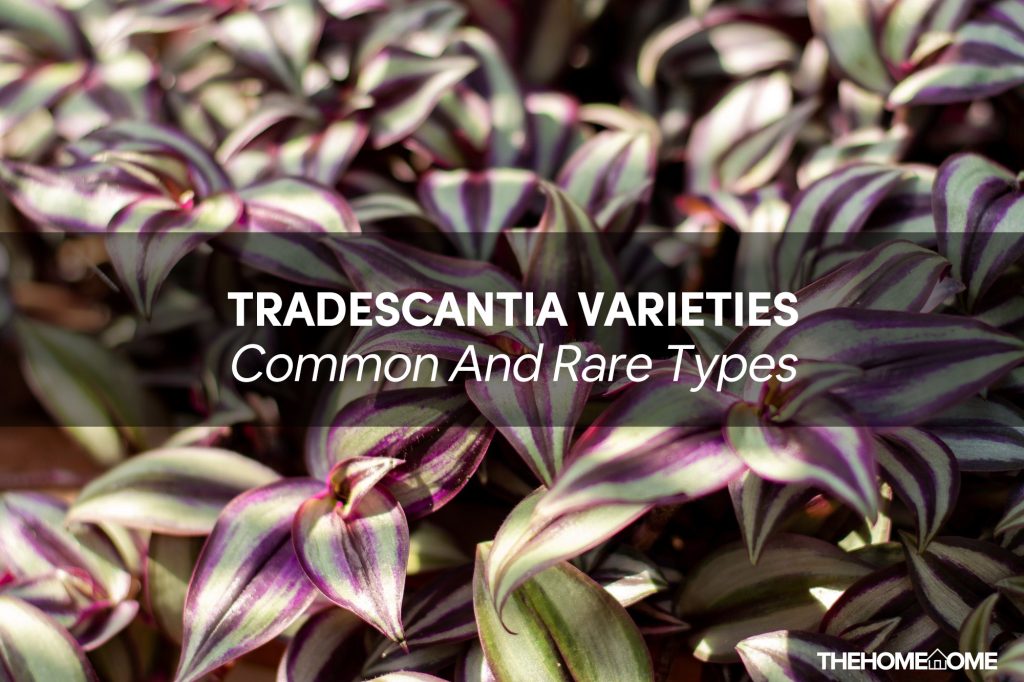Also, commonly referred to as the Spiderwort, the Tradescantia plant is a striking houseplant with varied foliage colors. The Tradescantia species is a common option for houseplant growers because it doubles as a standard and trailing houseplant.
From, green, white, pink, red, and burgundy, their foliage colors are sure to light up any corner in your home or working space.
Little wonder, it is commonly propagated as an indoor houseplant rather than an outdoor houseplant. The best of the Tradescantia plant is gotten when they are grown as bushy plants.
A stress-free propagation is guaranteed once you can provide moderate watering, moist soil, an appropriate temperature, and a pest-free environment for your Tradescantia plant.
We have eased off the stress of searching for the Tradescantia variety to propagate in your home by providing a list of the most colorful Tradescantia varieties.
Tradescantia Plant Basic Information and Care Tips
This is the profile of the Tradescantia plant and tips that would ensure a hitch-free propagation for you:
| Botanical name | Tradescantia spp. |
| Origin | Caribbean, Mexico, and South America |
| Light | Bright indirect light |
| Watering | Moderate watering |
| Temperature | 65°F-75°F |
| Toxicity | Toxic to pets and humans |
| Food | Liquid-based fertilizer |
| Humidity | Low humidity |
| Foliage color | Green, White, Red, Burgundy, and Pink |
| Susceptible Plant Issues | Root rot, Wilting leaves, Sparse growth, Yellow/ Brown / Dried Leaves, Pest Infestations from Aphids, Mealybugs and Spider mites |
Do well to follow these tips once you start your Propagation journey.
- The Tradescantia plant must be kept out of the reach of children.
- Regularly look for pest infestations from Aphids, Spider mites, and Mealybugs. Use a recommended insecticide to combat pest infestation in severe cases.
- If your kid or pet ingests the Tradescantia plant, attempt removing leaves from the mouth before going to the clinic or the Veterinary doctor as the case may be.
- Modify your schedule to cater to the watering needs of the plant. Although they are drought-tolerant, prolonged neglect can permanently damage your Tradescantia plant.
- Use brightly colored containers to pot your plant.
- Ensure the leaves are misted regularly.
- Avoid changing the environment of this plant to avoid environmental or transplant shock.
- In the case of root rot which is often caused by overwatering, stay off watering for a while till the root recovers. If there is no noticeable recovery, repot the plant to give it a fresh start.
- Ensure your Tradescantia plant receives at least 4 hours of sunlight daily.
- Make use of drilled containers that would allow proper drainage of water. This helps prevent waterlogged soil.
15 Common And Rare Tradescantia Varieties
They are great options for beginners and experienced houseplant growers since they are affordable, easy to propagate, and are low-maintenance plants. If you want a full blast of colors in your home, choosing several options out of the 15 options listed would not be a bad idea.
1. Tradescantia Purple Heart
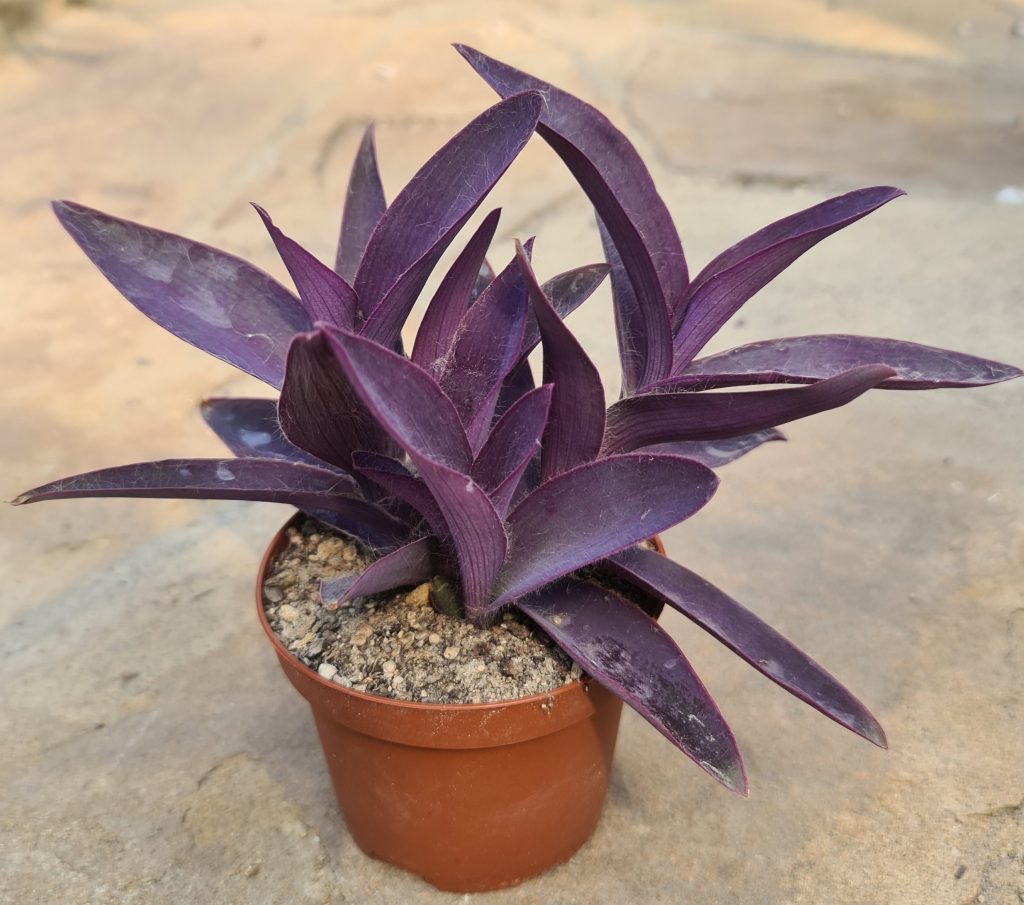
This plant is considered one of the most attractive Tradescantia varieties. Both the upper and lower foliage color is purple. The thin, narrow and pointed purple leaves make it a striking plant for an aesthetic effect in the home.
They are mostly grown as indoor houseplants for their bright and attractive color as the Purpleheart plant adds pops of color in any location it is placed in the home, especially when they are placed in colorful containers and conspicuous locations.
The Tradescantia Purpleheart species is a trailing plant, so they could be placed in dangle baskets or hanging shelves for a better view of their beauty. During their bloom time, they exude small clusters of petal flowers. They are low-maintenance plants, although they require bright light to preserve their bright foliage color and vigor.
Ensure that their location in your home allows them access to bright indirect sunlight. They thrive when they are provided with moderate watering, moist organic soil, bright indirect sunlight, suitable containers, and appropriate temperate conditions. When properly tended to, they can grow up to 18 inches.
2. Tradescantia Zebrina
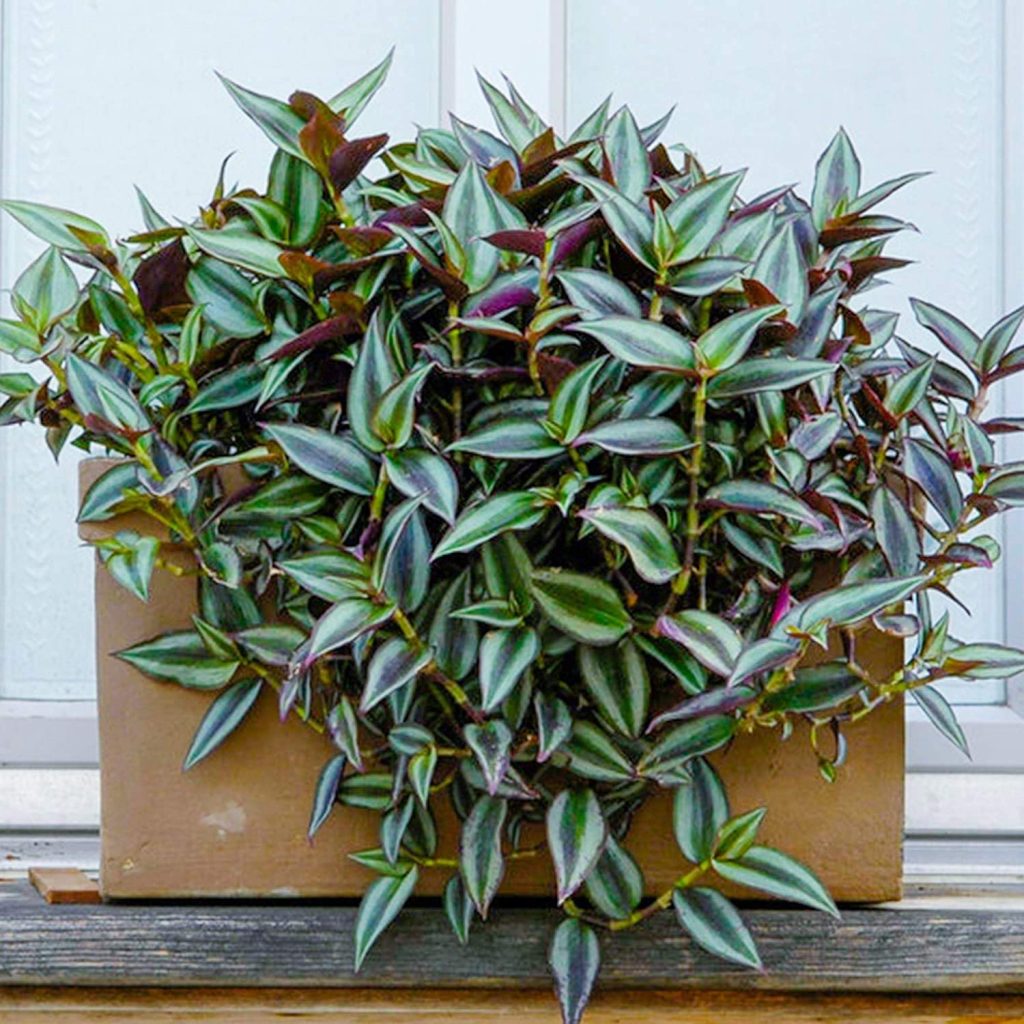
The lance-shaped leaves of the Tradescantia Zebrina have an alluring effect on any home. The multicolored plant has a combination of green and purple and makes a good option for ground covers since it is a trailing plant.
Most growers, however, grow them as indoor plants where they can be placed to complement the interior decoration of the home.
The foliage color is not the only attractive feature of this plant, during spring, this plant blooms and produces rose-like flowers, although this is reserved for outdoor propagated Tradescantia Zebrinas. This plant can grow up to 9 inches as a trailing plant.
Their aesthetic effect on any home is appreciated when there is a full mass of this variety. Most growers prefer a bushy Tradescantia Zebrina plant, so they persistently snip off young pups. This is a technique that enhances the speedy growth of your Zebrina plant.
You are sure to have a bushy Zebrina if you adopt this technique alongside applying an adequate amount of fertilizer to the Tradescantia Zebrina plant. This plant should be watered thoroughly, although the soil must never become swampy as it could lead to root rot.
3. Tradescantia Albiflora
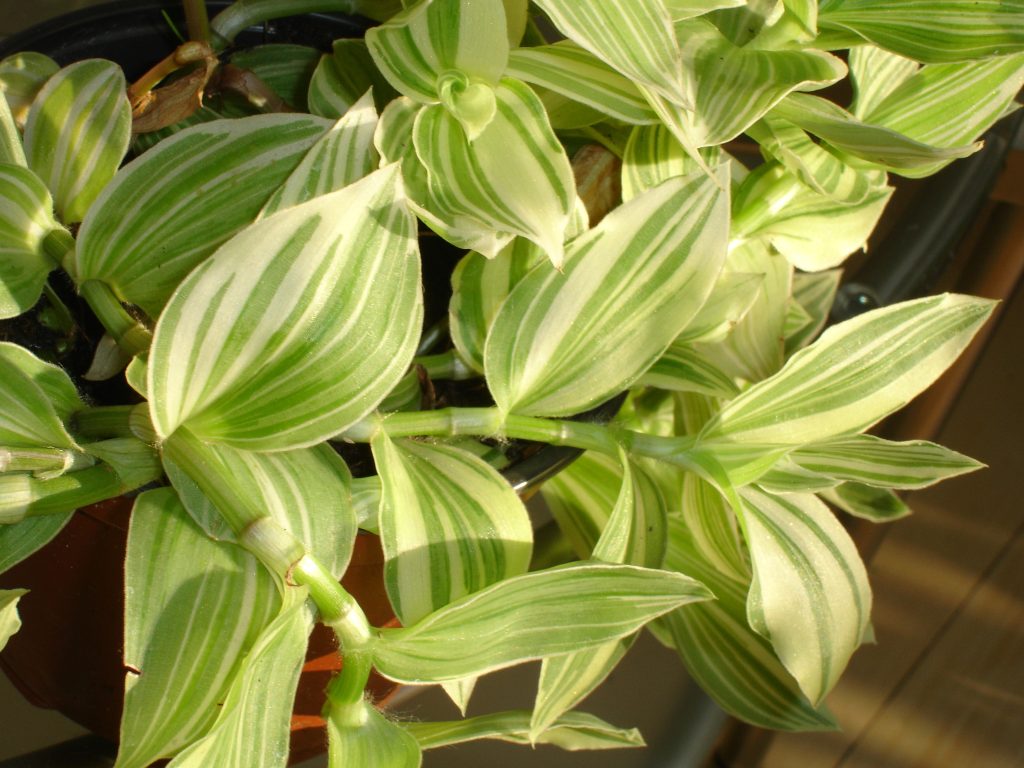
Tradescantia albiflora is regarded as the long name for a white giant inch plant with large blue-green leaves striped and it happens to be very easy to care for. This is a really stunning plant, it prefers bright indirect light to direct light and insufficient light can cause the foliage color to start fading. To boost the health of this variety, you can feed it plant food and give it plenty of indirect light.
If the ideal light setting is provided for this plant then you can expect it to grow into a full lush gorgeous plant. If it does have a pest infestation, you can shower it with fresh water and spray it with neem oil.
This plant also enjoys a humid environment and although it has an uptight growing habit, it is easy to care for. It is one of the common varieties of Tradescantia plants.
4. Tradescantia Burgundy
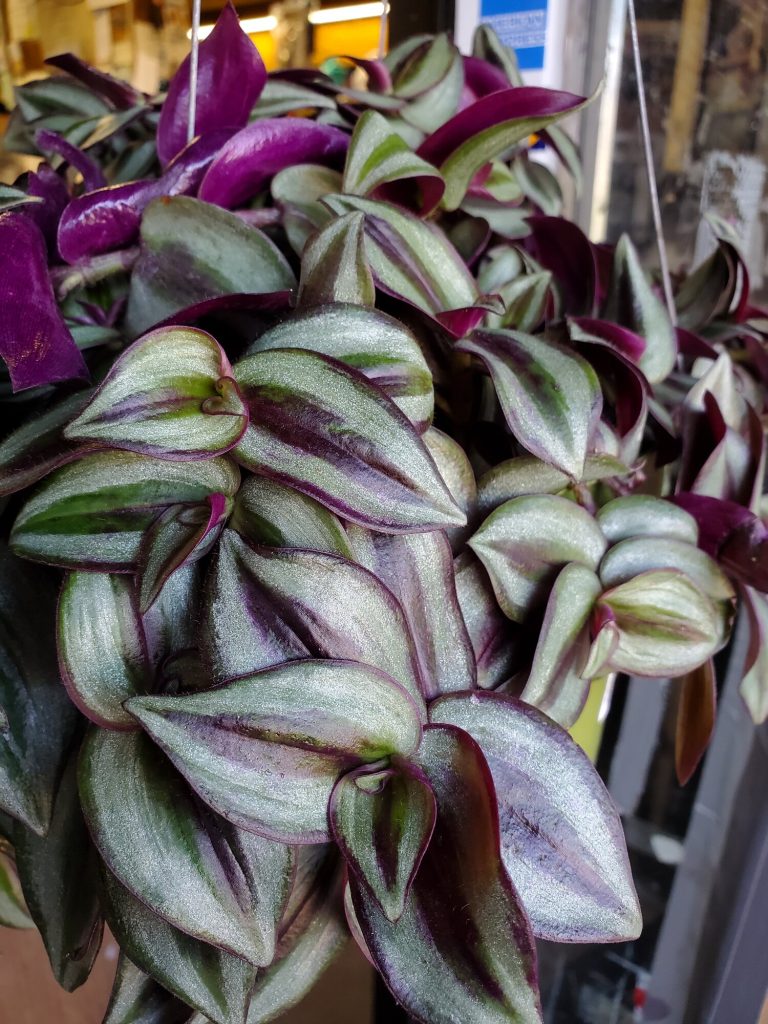
Amongst other species of the Tradescantia plant, house plant growers consider the Tradescantia Burgundy plant one of the most stunning varieties. The wide burgundy leaves of this plant easily captivate onlookers in any home. This trailing can be grown as a standard houseplant, although it requires that the growers prune them persistently.
The attractiveness of the Tradescantia Burgundy is enhanced when they are grown in brightly colored containers. Their beauty is toned down when they are positioned in inconspicuous corners since they are showy houseplants. This variety is affordable, easy to propagate, and a low-maintenance plant.
Growers are expected to mist their leaves regularly to preserve their bright color, eliminate dust, and improve the humidity level of the environment. This variety must be placed in a location where it can receive sufficient lighting.
Depriving the Tradescantia Burgundy of adequate lighting is the fastest killer to its striking color and foliage vigor. If the location of your home does not allow access to sufficient sunlight, make use of artificial light from bulbs and lamps.
5. Tradescantia Lilac
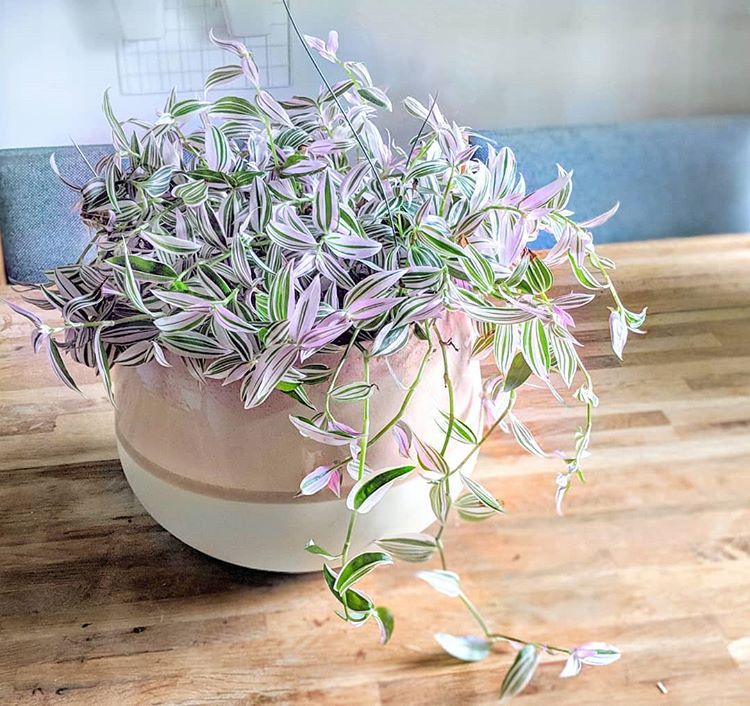
This variety is commonly sold under the tag name “Wandering Jew Lilac”. The unique foliage design of the Tradescantia makes it a popular option for houseplant growers. The dominant colors of this plant are lilac and shades of green. The striped-colored plant can double as a standard houseplant or a trailing one.
This plant can grow up to 2 ft. in height and width. Snipping off young tendrils encourages faster growth for a bushier plant. They are sure to thrive when they are provided with their basic growth needs which are moderate watering, organic soil, appropriate container, and a warm environment.
Ensure the soil does not completely dry out before watering it as this can affect the foliage color and vigor of the plant. They are to be watered at least once a week depending on the temperate condition of your environment. This variety can be ordered from nearby nurseries or online plant stores.
6. Tridescantia Nanouk
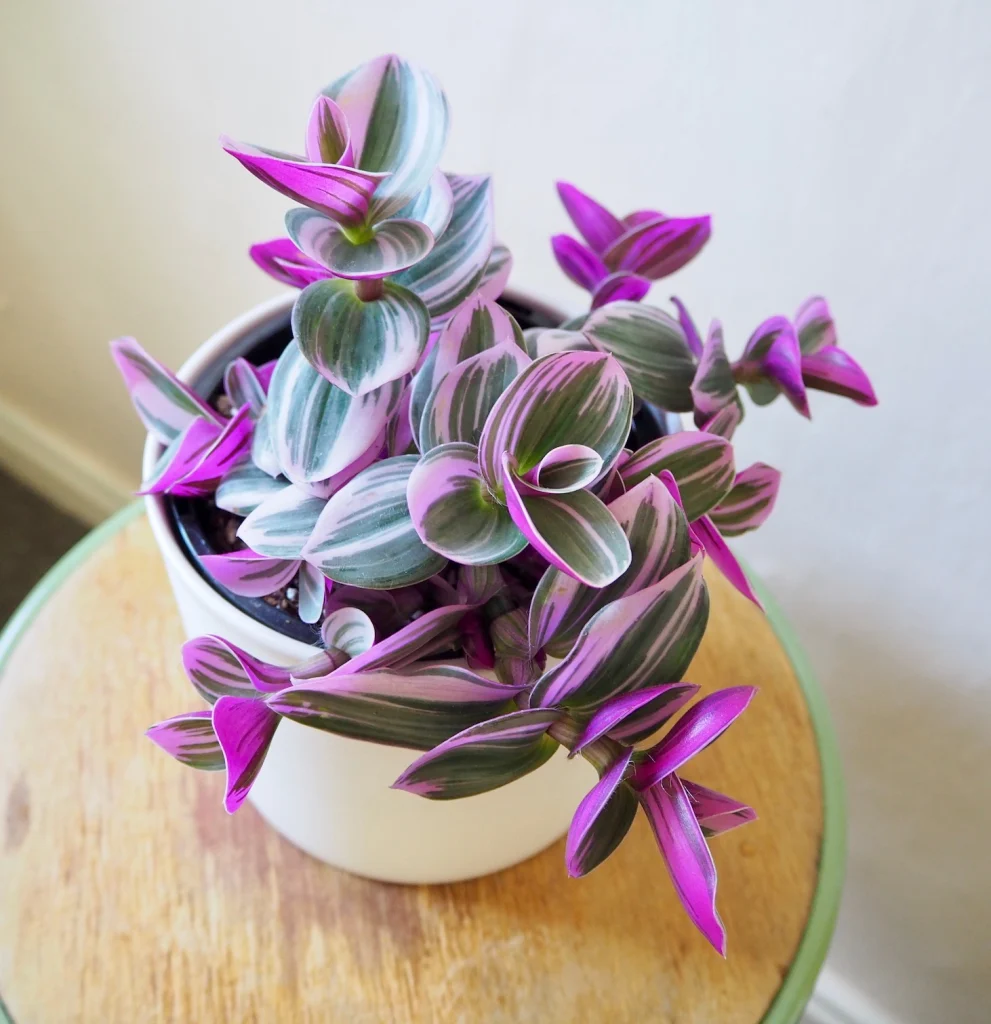
The Tradescantia Nanouk is also known as the Fantasy Venice and it is a tender evergreen you can’t help but love for its bright beautiful colors. This plant is often grown as an ornamental plant and it also works as a trailing border around rocks and enclosed gardens. This plant can also be landscaped in a covered garden.
This is another popular variety and it is a lot similar to the pink stripes. Fantasy Venice will thrive in a container placed on a patio, on hanging baskets, or outside.
It also loves bright indirect light but it will grow well in partial shades and full sun outdoor. It is important to monitor how much sun this variety is getting especially if you live in a hot climate as too much sun can turn the leaves brown.
7. Pink Stripes
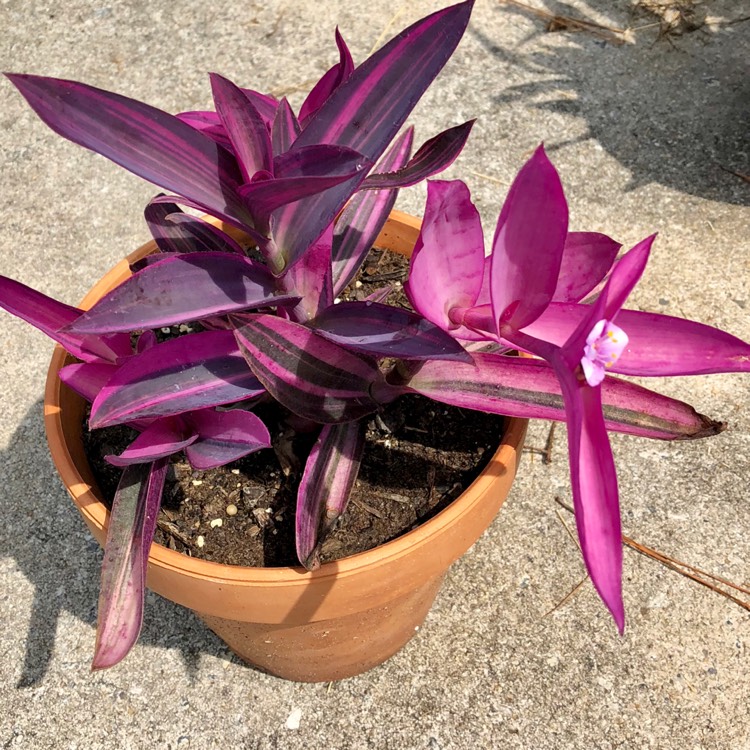
The Pink striped Tradescantia belongs to the class of most striking Tradescantia varieties. This plant is easily recognizable for its foliage color which has hues of pink. The thin-shaped plant can be grown as an indoor and outdoor plant, but houseplant growers consider it a favorable option for indoor propagation. This variety is quite rare, so they are more expensive than other varieties.
You can order this variety from online plant stores. Once your Tradescantia plant is delivered, do not be quick to apply fertilizers to boost their growth. Allow the plant to adjust to the temperate condition of your home. Environmental shock is a condition where the plant is affected by a change in temperature.
Sometimes, it can lead to falling leaves or sparse growth of the plant if not properly tended to. If you want a full mass of the Pink stripes, pinch back early pups to promote bushy growth. The growth needs of this variety are adequate watering which is preferably once a week, moist soil, and a warm environment.
8. Tradescantia Andersonia Blushing Bride
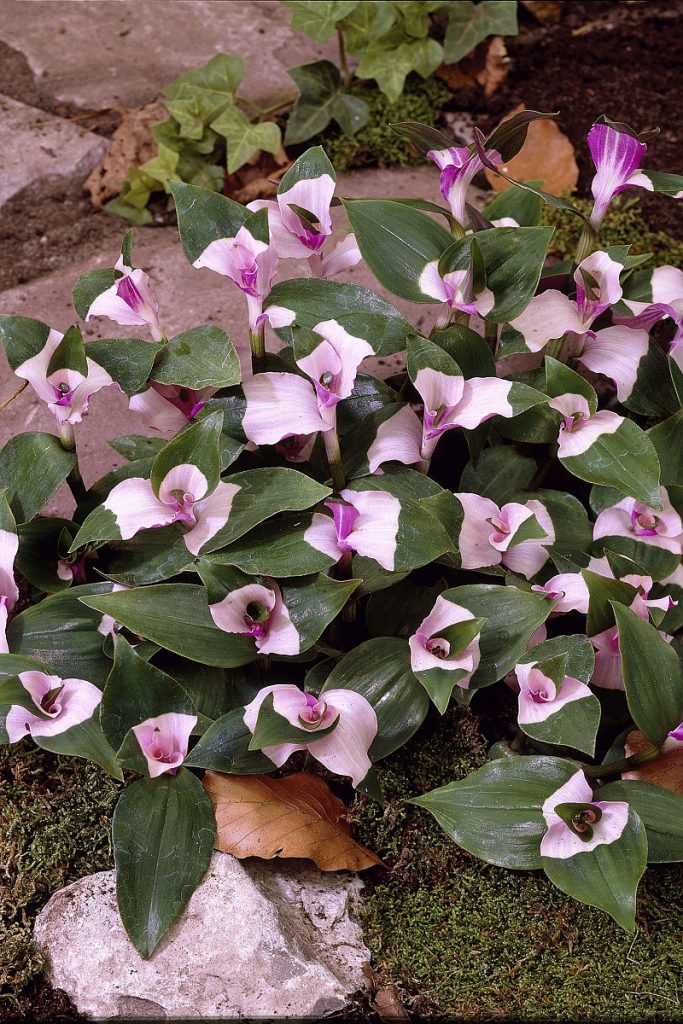
This is one variety that cannot go unnoticed regardless of its location in the home. This stunning plant has a combination of green and white as foliage colors; some varieties have theirs as green and pink. The beauty of this variety is appreciated when they are bushy and neatly pruned.
They can be grown as indoor or outdoor houseplants. The added advantage for Blushing Bride plants propagated outdoors is they produce lilac petals during bloom time. They would have no small effect on the interior design of your home.
If you are big on interior aesthetics for home, make use of brightly colored pots to enhance their attractiveness. Ensure the pot chosen is well drilled to allow proper drainage of water. If the soil gets swamped as a result of overwatering, stay off watering till the soil is almost dried.
Like most varieties, the Blushing Bride plant is easy to propagate and maintain. Since this plant is a trailing houseplant, you should look out for creative ways to display them around your home.
9. Tradescantia Tricolor
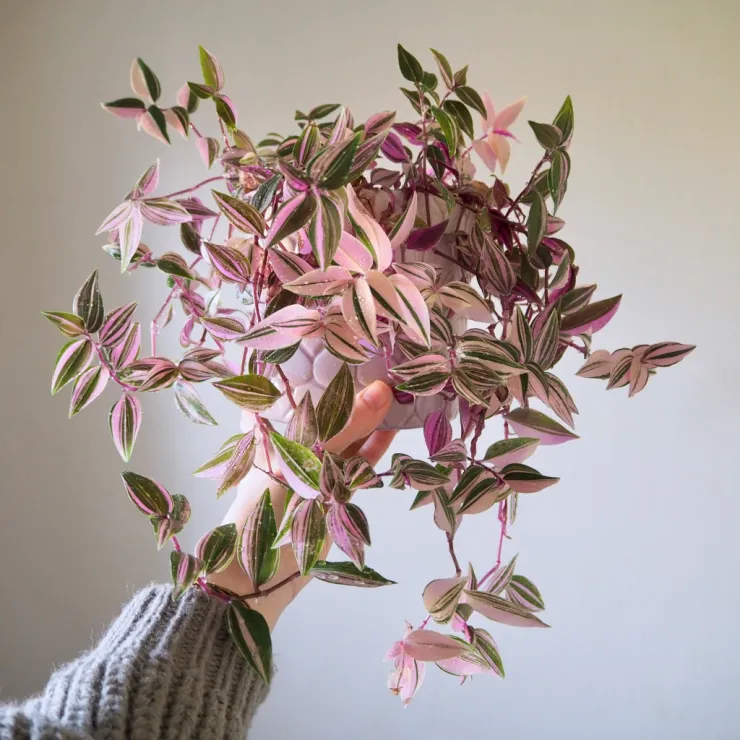
A striped-colored houseplant is sure to captivate your attention any day. The Tradescantia Tricolor boasts of three bright colors- green, white, and pink. This variety has its origin in the Caribbean, Mexico, and South America. They can be propagated as both indoor and outdoor houseplants.
They thrive in temperatures between 65 °F-75 °F. When properly tended to, they can grow up to 9 inches in height and 24 inches in width. Proper lighting, adequate watering, organic soil, the subtle application of liquid-based fertilizer, and warm environments are the basic needs of the Tradescantia Tricolor.
When grown indoors, the Tradescantia Tricolor must be kept in a bright environment to preserve its brilliant foliage color and vigor. If grown outdoors, persistently lookout for pests as this variety is susceptible to Spider mites, aphids, and mealybugs.
The Tradescantia Tricolor is highly toxic, so it must be kept out of the reach of kids and pets. Growers are expected to wear gloves while tending to this plant because direct contact with the sap can cause irritable reactions.
10. Tradescantia Ohioensis
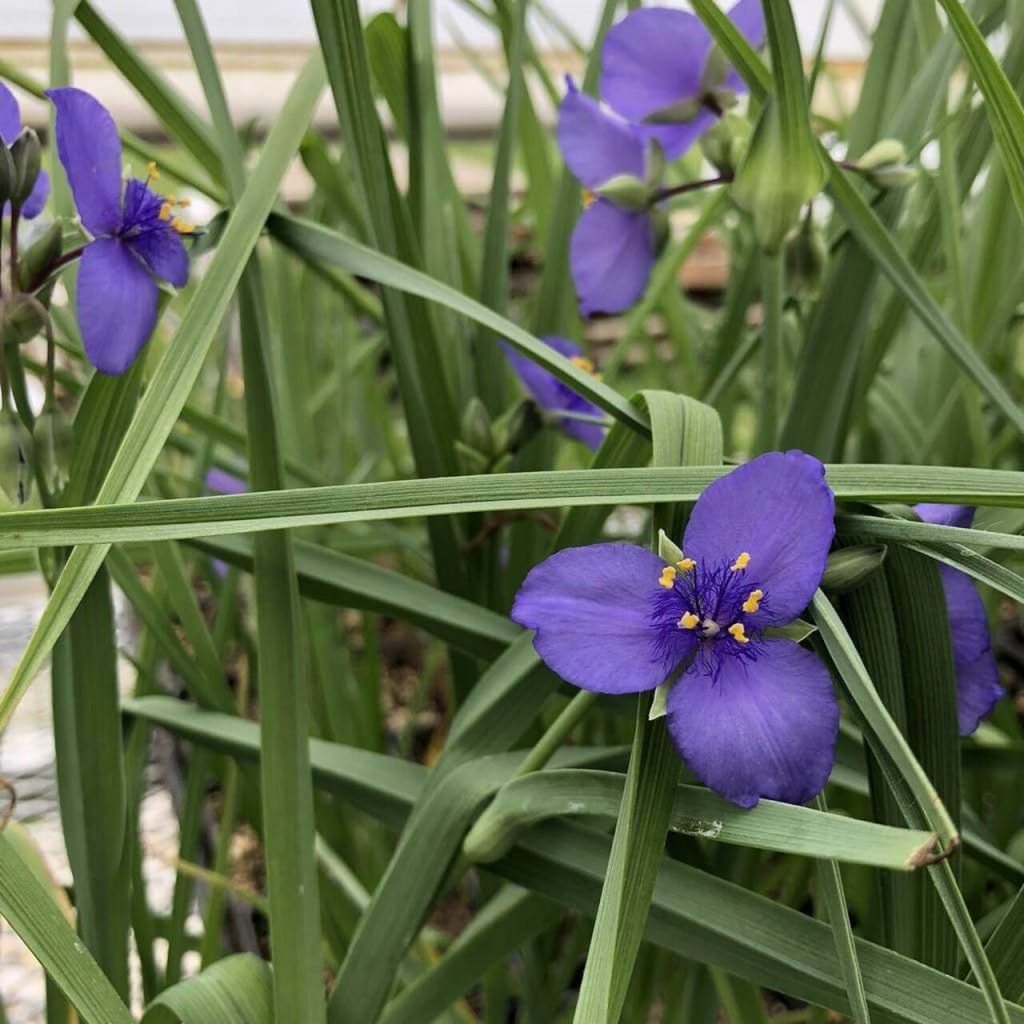
This is commonly known as Ohio spiderwort and it doesn’t look like the regular variety of spiderwort rather the leaves are long and arching which looks just like grass. It does have branched erect stems of bluejacket or it can be tinged purple and bear-like leaves. This plant has flowers that bloom throughout the season.
Ohio spiderworts can grow as tall as 2-3 feet but they are mainly loved and grown for their attractive foliage. The leaves are also reported to be edible, it is believed that they can be eaten fresh or cooked.
In addition, the leaves can be used as medicine in some cultures. The seeds are edible as well and they can be roasted and ground into a powder to be tossed in soups. The foliage is non-toxic to animals as well.
11. Tradescantia Red gem

This attractive lot is a unique variety due to its red foliage color. The Tradescantia Red gem deviates from the regular green, white and pink color that most Tradescantia varieties have. You would tone down the beauty of this plant if you use drab or regular containers.
Use attractive containers for potting and see the pop of colors this plant would add to your home. They are popular houseplants, so they can be easily purchased from nearby nurseries or online stores like Amazon.
This plant is sure to bloom when they are adequately watered, kept away from drafts, and positioned in brightly-lit areas and in warm temperate conditions. Regularly mist the leaves of this plant to improve the humidity level of your environment; if not, humidifiers can come in handy.
The most appropriate positions for this plant within a home are near windows or areas with artificial light. Proper lighting preserves the brilliance of your Tradescantia Red Gem.
12. Tradescantia Sillamontana
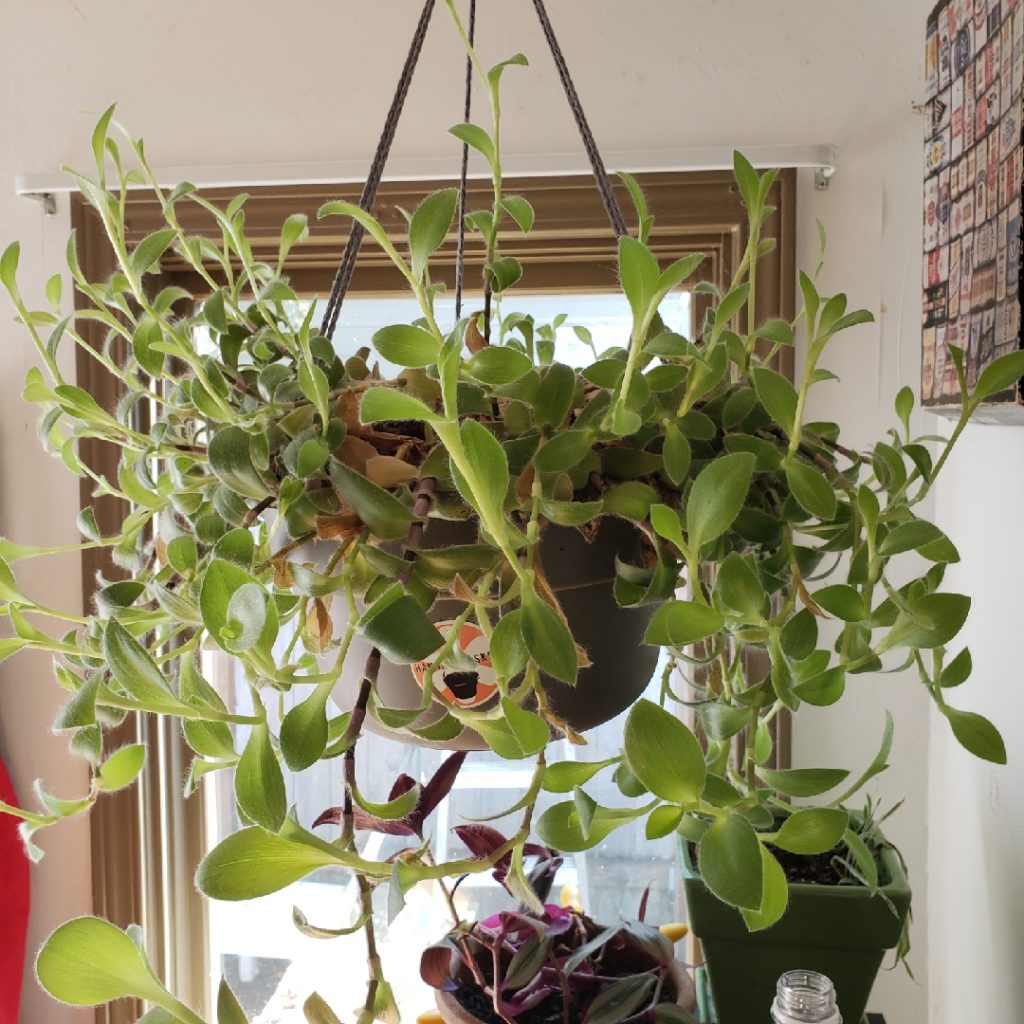
This is one of the tradescantia varieties that can be planted in well-drained soils and placed in the sun or partial shades. Tradescantia Sillamontana is known as white velvet wandering Jew or cobweb spiderwort. This plant is round shaped and is thickly padded into some typical type of succulent slices and happens to be covered with a protective layer of silvery hair.
Tradescantia Sillamontana is a really gorgeous plant although it might look plain at first. This easy-to-grow plant is also fast-growing and makes an excellent ground cover in warmer climates.
A morning sun is a great option for this plant. To promote healthy growth, keep the soil moist regularly but not wet. It may grow up to 6 or 18 inches with a spread of 2 feet with proper care and avoid too much exposure to the sun as it may burn the leaves.
13. Tradescantia Fluminensis
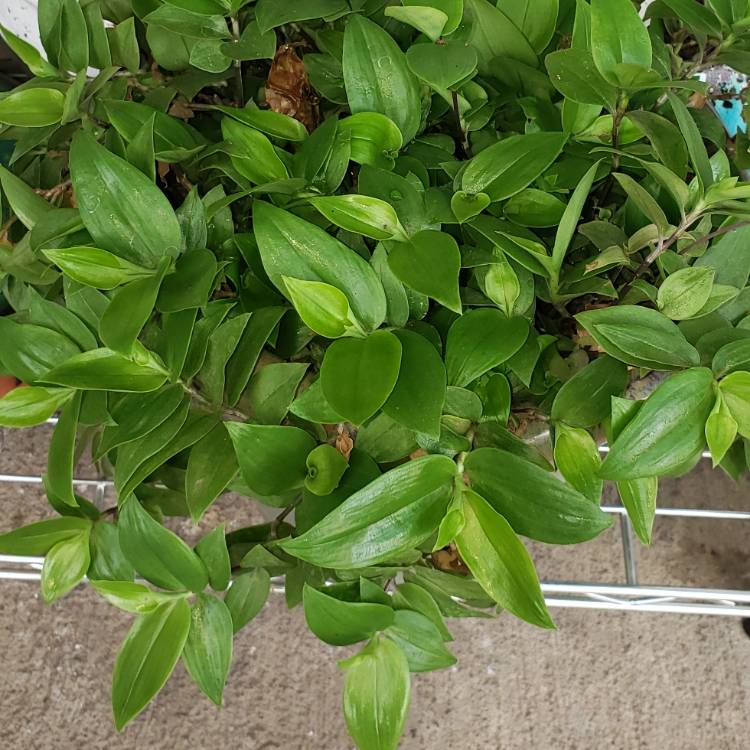
The foliage colors of this variety range from shades of green to lemon, cream, and white. This plant curls beautifully when they mature and start to trail. This flurry variety is easy to maintain and is a good option if you are just starting as a houseplant grower.
The Tradescantia Fluminensis must be provided with moist soil that must be frequently watered. Although they are drought-tolerant, they should not be deprived of adequate watering for long. In the same regard, they should be overwatered as this could lead to root rot.
Their leaves must be regularly misted to improve the humidity of the plant. They can be placed in dangle baskets or hanging shelves around the home. Ensure they are within the reach of bright light to prevent the bright leaves from fading.
The appropriate temperature for the Tradescantia Fluminensis is between 65 °F-75 °F. Regularly pinching early growth forces the Tradescantia plant to grow out more stems which results in a bushy yet beautiful houseplant for you.
14. Tradescantia Baby Bunny Ears
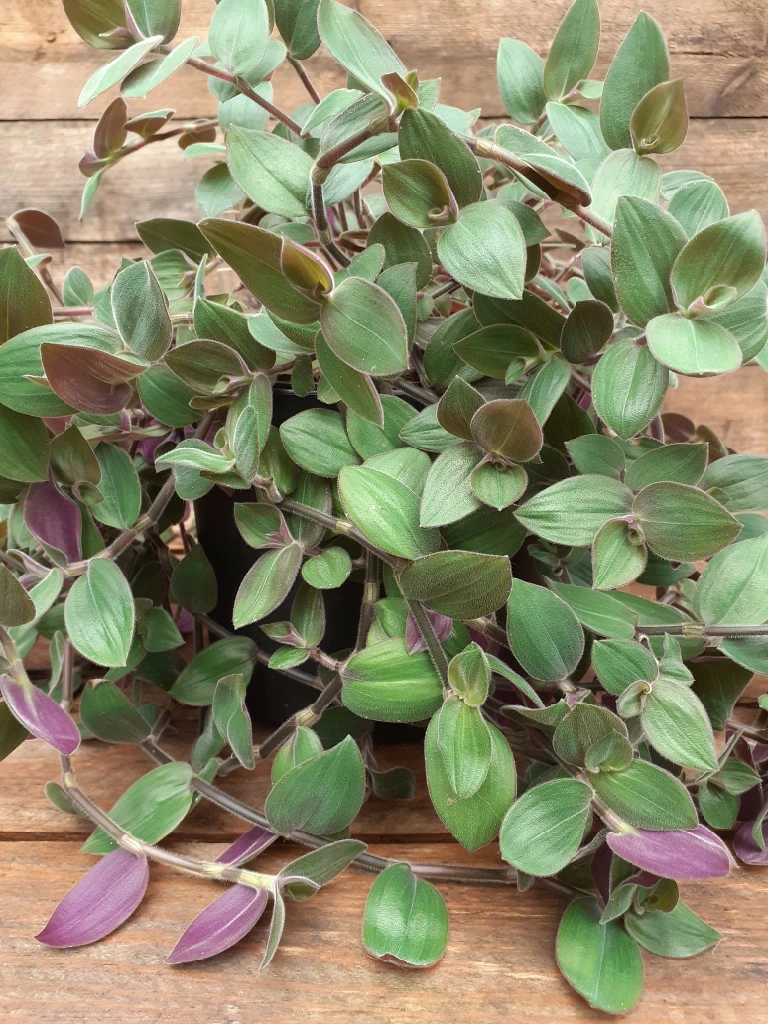
Although this plant is not as colorful as other varieties, the fuzzy foliage and trailing stem easily captivate onlookers. The compact-sized leaves make up for their seemingly regular color, unlike other varieties that have narrow and long leaves. They are very common varieties that are easy to propagate and maintain.
This plant tends to get bushy in a short while especially if they are pruned regularly. This means the plant must be adequately watered so that no aspect of the plant is deprived of sufficient watering. It is also applicable to their lighting conditions.
The Baby Bunny Ear plant must be placed in a location where it can receive bright indirect sunlight. If grown outdoors, they should be placed in shaded areas to prevent direct exposure to sunlight whilst getting sufficient lighting needed to thrive.
Ensure they are grown in a pest-free environment to preserve the foliage appearance and life span of your Baby Bunny Ears plant.
15. Rhoeo Oyster
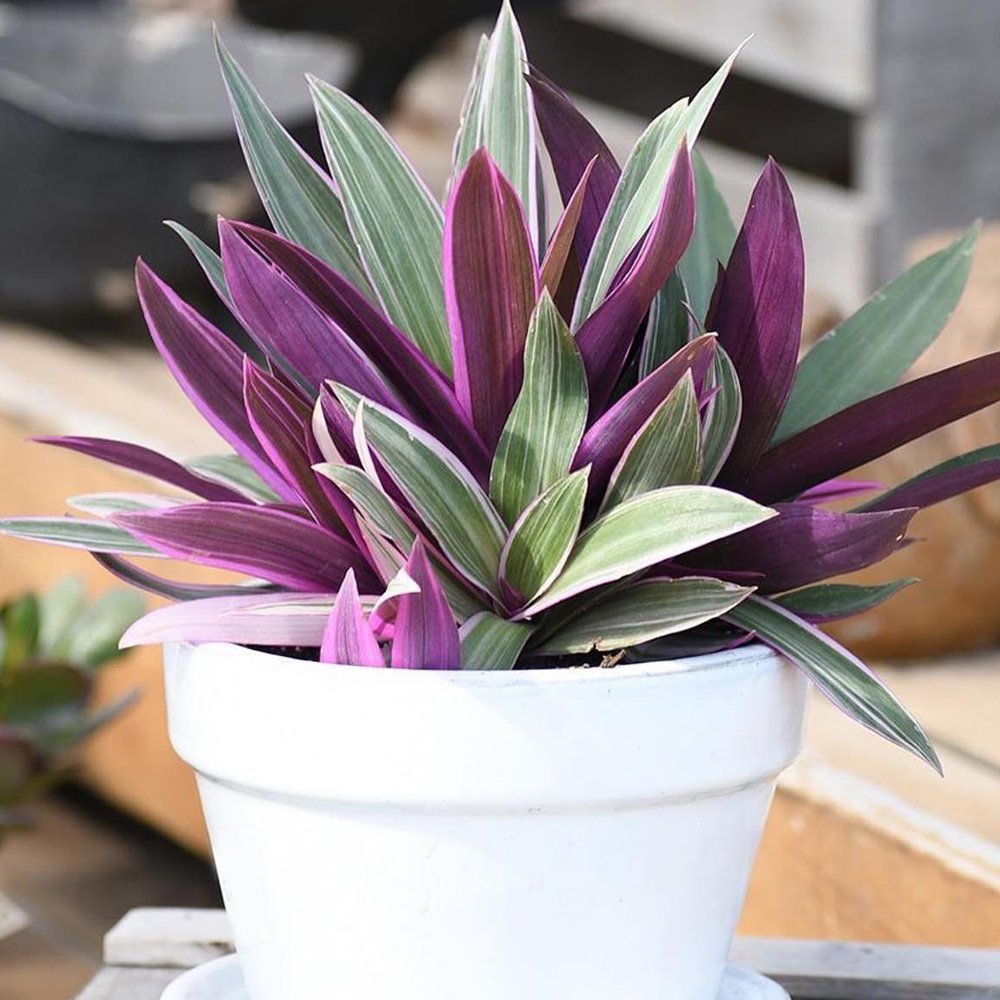
Rhoeo Oyster is a variety of tradescantia that is also known as the oyster plant and it’s one that can make your home decor look absolutely stunning. This tradescantia variety grows flowers that grow directly from the base while most people enjoy planting it for its tricolor and green leaves. This is a popular eye-catching compact plant.
This tradescantia variety is for tradescantia collectors that prefer bigger leaves. Rhoeo plant has stripes of purplish colors which also include green, white, and pink which is a lot similar to the tradescantia tricolor but this has bigger leavers.
Final Note
We are sure you had a swell time going through these Tradescantia varieties. If the tips provided are followed, you are sure to have an easy propagation journey.
You could link up with other houseplant growers in your community to glean from their experience and share your propagation journey. Do us the honor of sharing your propagation journey after choosing the variety that suits your fancy.
More on plant varieties:
- Dieffenbachia Varieties: 9 Varieties To Grow Today
- 6 Common & Rare Spider Plant Varieties To Propagate Today
- Spirea Varieties: 10 Common & Rare Types Of Spirea
- Croton Plant Varieties, Problems, FAQs (Complete Guide)
- Peperomia Varieties: 12 Types Of Peperomia Plants
- Coneflower Varieties: 9 Common And Rare Types Of Cone Flowers
- Scindapsus Varieties: 6 Types Of Scindapsus Plants To Grow Today
- Heuchera Variety: 10 Common And Rare Types Of Heuchera
